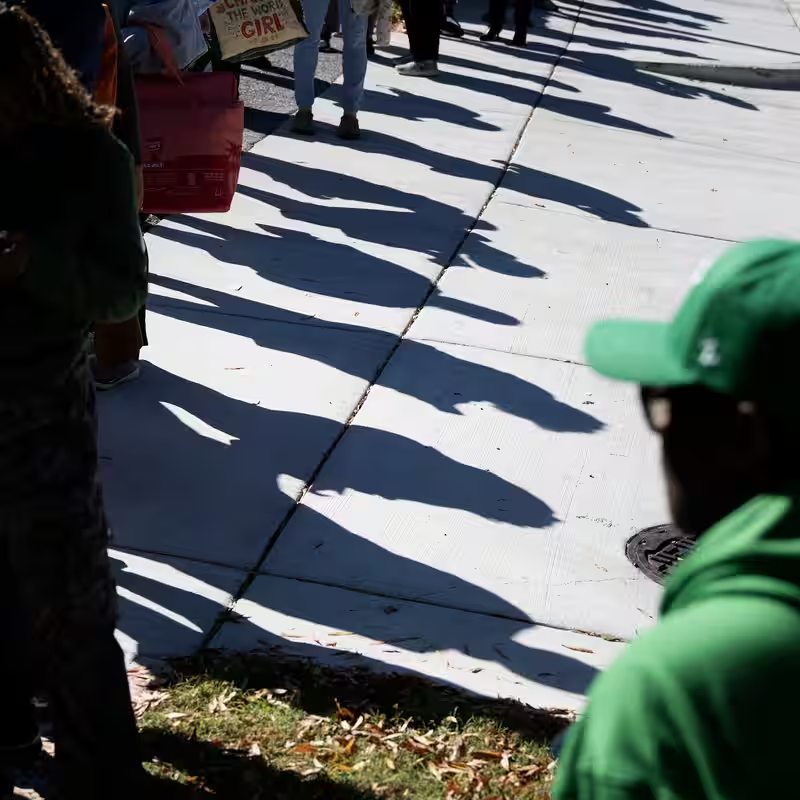Table of Contents
- First $0 Paychecks Hit Federal Workers
- How the Shutdown Unfolded
- Who’s Working—and Who’s Not Getting Paid?
- Real Stories from the Frontlines
- Broader Economic Fallout
- Will Workers Ever See Back Pay?
- Sources
Federal Workers Miss Paychecks as Shutdown Enters Week 4
For the first time since the government shutdown began on October 1, 2025, hundreds of thousands of federal employees received $0 paychecks this week—a stark reality check as the political stalemate shows no signs of ending.
Among them is Pamela Ward, a 27-year veteran of the Social Security Administration in Birmingham, Alabama. “It was a rough day today,” she said. “I’ve worked all my life… this is my first time ever receiving a paycheck when there was nothing on it.”
How the Shutdown Unfolded
The current federal shutdown stems from a budget impasse between Congress and the White House over spending priorities. With no continuing resolution passed by the October 1 deadline, non-essential government operations froze.
Unlike previous shutdowns that lasted days, this one has now stretched into its fourth week—with no bipartisan agreement in sight. President Trump has even suggested he may withhold back pay for certain workers, despite federal law requiring it once operations resume.
Who’s Working—and Who’s Not Getting Paid?
According to the Bipartisan Policy Center, the workforce impact breaks down as follows:
| Category | Number of Workers | Pay Status |
|---|---|---|
| Furloughed | 670,000 | No work, no pay |
| Working without pay | 730,000 | Required to work, but unpaid |
| Still being paid | 830,000 | Funded through self-sustaining agencies or carryover funds |
This means over 1.4 million federal workers are either jobless or laboring without compensation—many in critical roles like air traffic control, food safety, and Social Security services.
Real Stories from the Frontlines
Dr. Rui Carlos Pereira de Sá, a biomedical engineer at the National Institutes of Health (NIH), was furloughed on Day 1. Unlike many, he’d been preparing for months after mass layoffs swept his division earlier in the year.
“I’ve been saving because I expected this,” said Dr. de Sá, who lives in Potomac, Maryland. His wife’s private-sector job provides a safety net—but he’s now organizing weekend food drives for furloughed colleagues outside NIH’s Bethesda campus.
For others without dual incomes, the strain is severe. Many report skipping medications, delaying car payments, or relying on community aid.
Broader Economic Fallout
Economists warn the shutdown’s ripple effects are mounting. Every week it continues, GDP growth slows by an estimated 0.1–0.2%. Small businesses near federal facilities—especially in D.C., Maryland, and Virginia—are reporting steep revenue drops.
Consumer confidence is also waning. “When 1.4 million people stop spending, Main Street feels it,” said economist Lena Torres of the Brookings Institution.
Will Federal Workers Ever See Back Pay?
Historically, federal law guarantees back pay once a shutdown ends. But this time, President Trump has floated the idea of denying it to certain agencies—a move that would be unprecedented and likely unconstitutional.
Unions like the American Federation of Government Employees (AFGE) are preparing legal challenges. “Our members are keeping the country running,” said AFGE President Everett Kelley. “They deserve every penny—and on time.”
Sources
Federal Workers Have Started Missing Paychecks During the Shutdown – The New York Times




